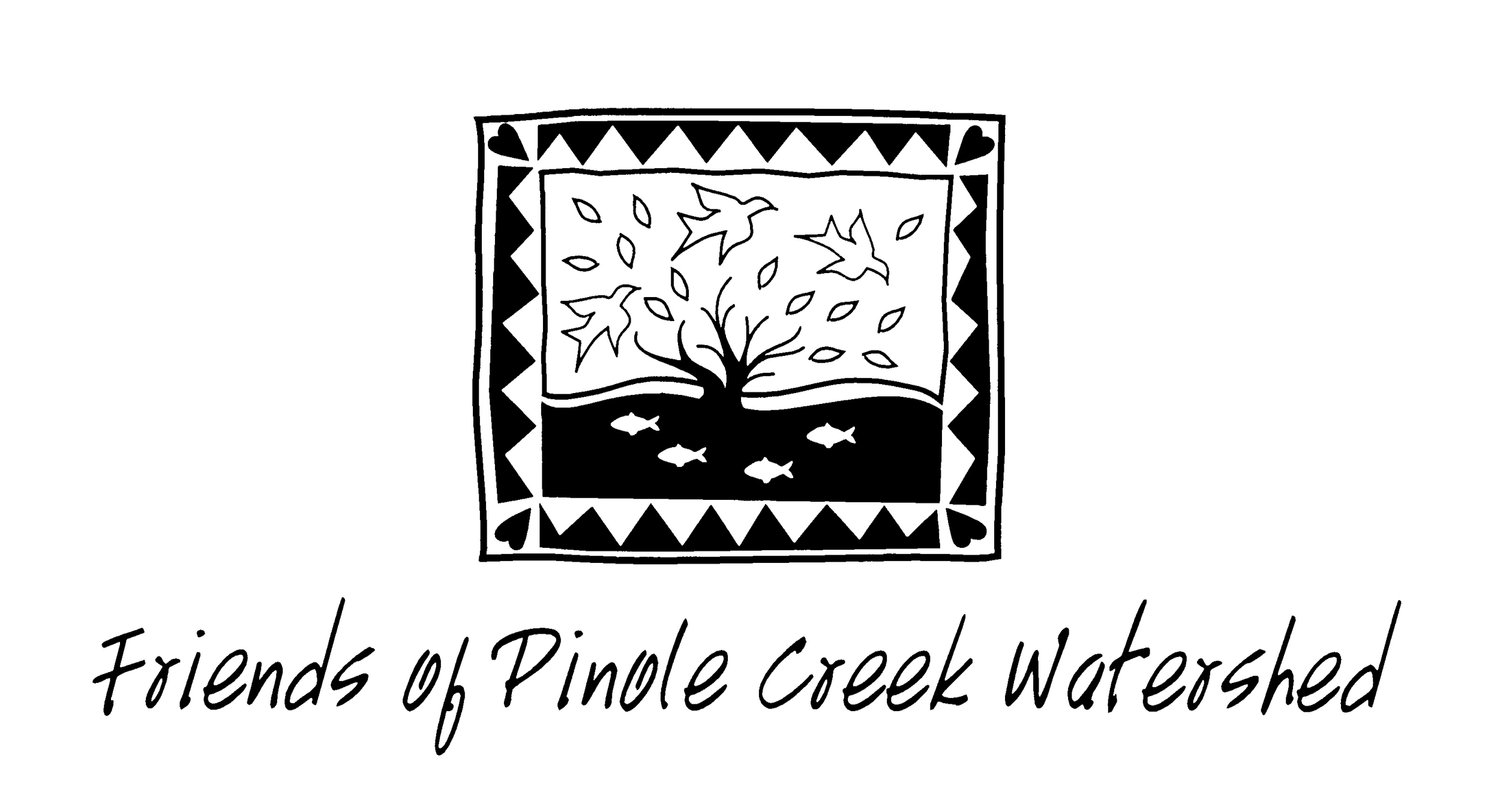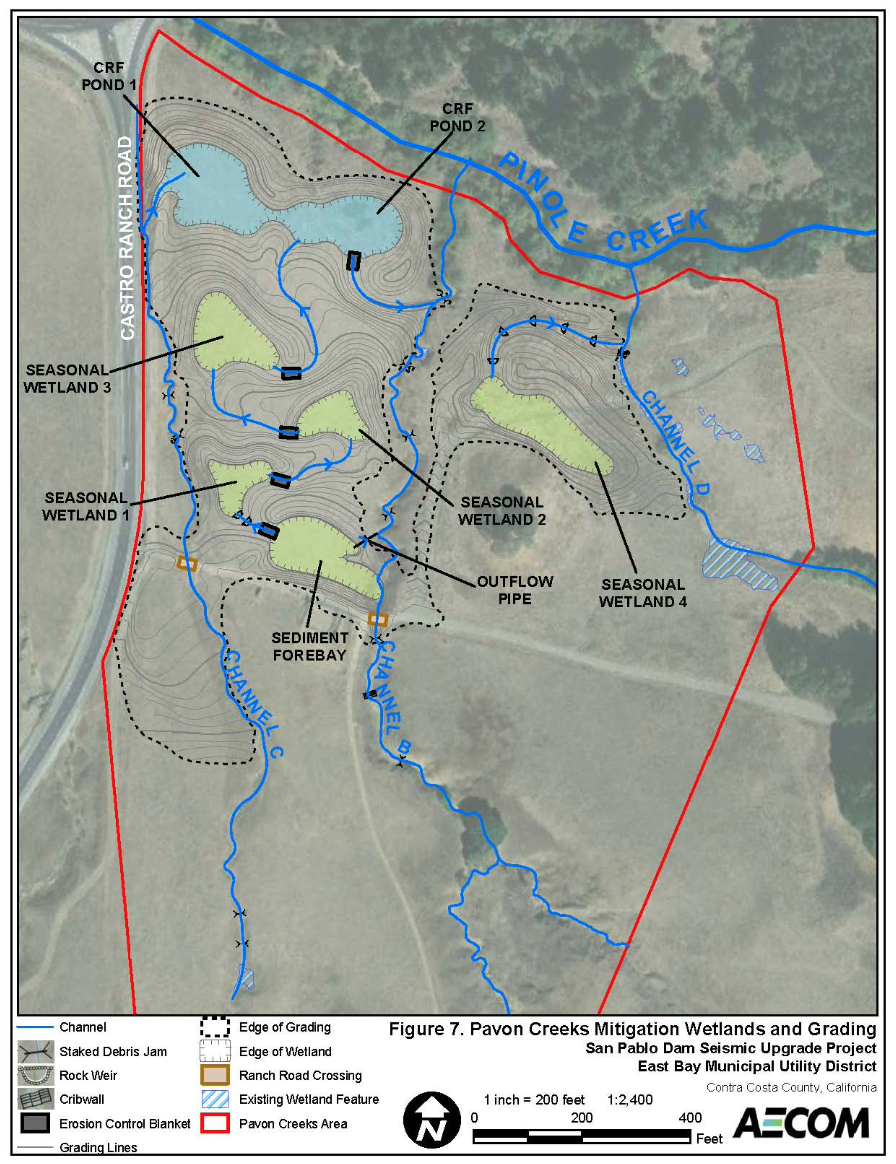Restoration Sites
Over the years, Friends of Pinole Creek Watershed has partnered with local organizations to implement restoration projects at different sites in the watershed.
Ecological restoration seeks to restore native habitat function to a site. Ecologically restored sites create habitat for native plants and wildlife and preform other ecosystem functions like water filtration, flood control, carbon sequestration, and public access. Oftentimes, restoration will be prioritized after a disturbance event such as development, channelization, or other land disturbance. Examples of ecological restoration include:
Removal of invasive plants; planting native plants
Increasing habitat connectivity for wildlife
Stabilizing creek banks with native plantings
Day-lighting creek channels
And more!
Pavon Creeks Restoration. Photo: EBMUD
Pavon Creeks Restoration
Project description from EBMUD’s website:
Pavon Creek flows into Pinole Creek near the intersection of Alhambra Valley Road and Castro Ranch Road in Contra Costa County. EBMUD's work to mitigate for habitat loss during the seismic upgrade of the San Pablo Dam includes creating habitat for California red-legged frogs, restoring existing stream channels, constructing new wetlands, and enhancing habitat for Alameda whipsnakes in the Pavon Creek and Scow Canyon Area.
EBMUD planted several frog ponds and wetlands, restored floodplains and planted native in 2010 and 2011. Mantinence and monitoring of the site will be ongoing through 2023.



